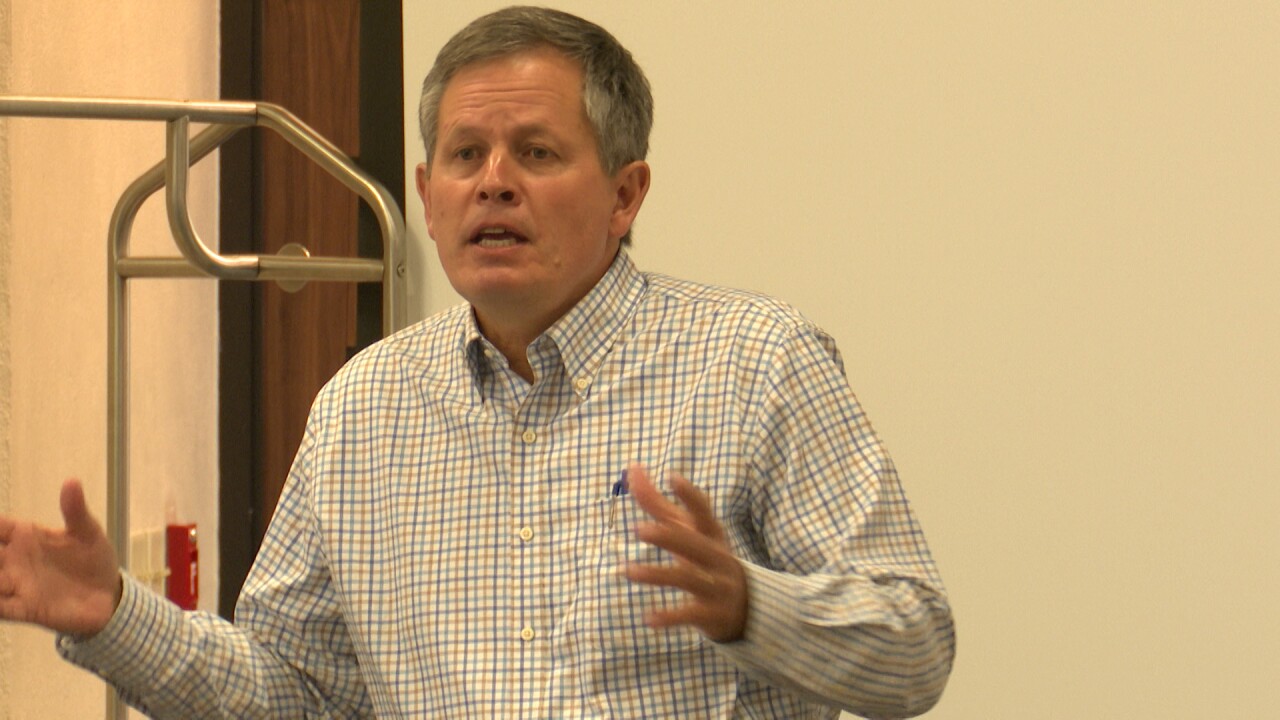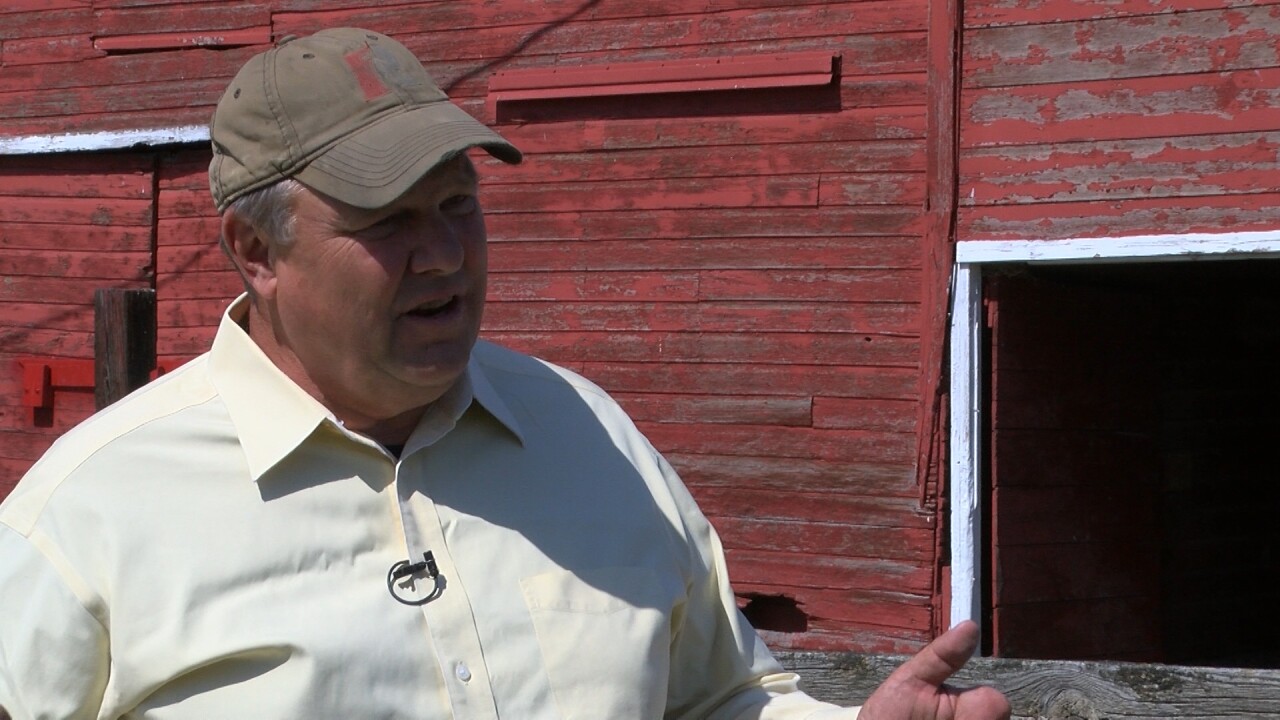This is the second of a two-part series on the contents of the Biden administration’s Build Back Better program, and what Montana’s two U.S. senators are saying about it.
Montana’s Democratic U.S. senator, Jon Tester, is supportive of President Biden’s ambitious social-program package known as Build Back Better, but says it can’t increase the federal debt – and that means some tax increases, which Tester says should fall primarily on the wealthy.
“I’m open to anything, as long as it doesn’t hit medium- and low-income folks,” he told MTN News this week. “I think that applying more taxes to the rich, who have so many opportunities out there for tax avoidance, is really important.”
But Montana’s Republican U.S. senator, Steve Daines, is strongly opposed to the measure – and maintains that while its tax provisions may be targeted at wealthy taxpayers and corporations, the impact will be felt by everyone, and ultimately hurt the economy.

“Believe me, if you start raising taxes on businesses, those tax increases will get passed on to the consumer,” he said in a recent interview. “Any time we can allow hard-working Americans to keep more of their dollars in their pockets, it’s the right thing.”
The bill’s price tag is $1.75 trillion over 10 years. Some of the major tax-and-revenue increases and changes in its current version include:
- Corporate minimum tax: A 15% minimum tax on corporate profits for companies that earn more than $1 billion a year. It also includes a global minimum tax on international corporations. Together, these two provisions are estimated to raise $450 billion to $600 billion over the 10 years period.
- Surcharge and increases for wealthy individuals: A 5% income-tax surtax on individual earnings above $10 million and an 8 percent surtax on earnings above $25 million. It also increases the taxation of some investment income for wealthy taxpayers. Together, these changes will raise about $480 billion.
- Stock buy-back surcharge: A 1% surcharge on corporate stock buy-backs, which are used to increase the value of a company for shareholders. It’s estimated to raise $50 billion to $125 billion.
- Increased IRS enforcement: The bill would add 80,000 agents to the Internal Revenue Service, primarily for auditing those earning $400,000 or more. Supporters of the bill note that the IRS auditing workforce has been greatly diminished in recent years, leading to fewer and fewer audits of wealthy taxpayers and less pursuit of tax scofflaws. This change is expected to raise an additional $125 billion.
- Prescription-drug prices: The measure gives the federal government, through Medicare and other means, more power to limit the price of some prescription drugs, which could result in a savings of $250 billion.
- Tax cuts/payments for middle- and lower-income families: It extends through 2022 a $250 per-month, per-child payment ($300 for children under 6 years old) and continues this payment as a refundable tax credit in future years, for families under a certain income level. It also extends an expanded Earned Income Tax Credit, which will lower federal taxes for an estimated 78,000 Montana taxpayers.

Daines, however, notes that the bill also includes a substantial tax break for wealthy individual taxpayers — by increasing the amount of state-and-local taxes that can be deducted on your federal income taxes from $10,000 to $80,000, benefiting people who live in high-tax states.
“It cuts taxes for the coastal elites,” he says. “You’ve gotta laugh about this.”
Tester says if that provision makes it out of the House, he’d like to see it removed in the Senate because any tax reductions should be going to those who need it, and not wealthy taxpayers.
But Tester says he expects many changes to the bill, including its tax structure, will be debated in the Senate — and that he’s not yet drawing lines in the sand on any of its specific tax proposals just yet.

“In the end, I’m going to take a look at it and see how it works for Montana families,” he says. “There may be better proposals come down the pike that are better for rural America, better for a state like Montana. We’ll take a look at them and draw our conclusions, based on that. But there’s one thing for certain: This bill needs to be paid for.”
Tester also says he doesn’t have a problem with additional IRS agents auditing the wealthiest taxpayers, or going after people who aren’t paying their taxes.
“The bottom line is, if you pay your taxes, you got no problems, no problems at all — unless you’re advocating that only certain people pay the bills for our defense and pay the bills for our programs that help the poor and educate our kids,” he says. “If that’s where you’re at, I think you’re living in the wrong country.”
Daines points to an analysis released this week by the congressional Joint Committee on Taxation, that says the bill will lead to higher taxes for some people earning less than $100,000, in the coming years — contrary to claims by the president and Democrats. That same analysis, however, also says the bulk of the tax increases in Build Back Better fall on the wealthy.
Daines says he simply opposes raising taxes to fund a huge expansion of government.
“Here’s the fundamental question: Should we allow the people of our country to make the decision of where to invest those dollars?” he says. “Or do we raise taxes and allow the federal government to make those decisions? … You lower tax rates, allow the American people to keep more money in their pocket, it actually spurs economic expansion and it increases wages for the American people.”




